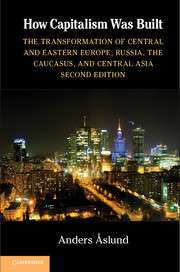The essence of a market economy is economic freedom – the freedom of trade, pricing, and enterprise. Deregulation transformed socialism’s shortage of goods and services to a scarcity of money, which is the predicament of capitalism. The sellers’ market became a buyers’ market, transferring economic power from producers to consumers. The growth analysis in Chapter 3 indicated that the liberalization of prices and foreign trade were the most forceful structural reforms. Because economic freedom is the very foundation of a market economy, I discuss liberalization before macroeconomic stabilization and privatization.
Although deregulation was the most important systemic reform, for a long time it received little scholarly attention. One reason is the paucity of relevant economic indicators, such as the degree of shortage, regional price dispersion, relative prices, product quality, and market structure. Economists had to create their own data sets, complicating empirical work.
Another reason was that economists tended to look on liberalization as something simple, something that could be done quickly, requiring little afterthought. Initially, liberal politicians and economists harbored an excessive belief in the spontaneous formation of markets, reckoning that it was enough to eliminate central planning, destroy the administrative command system, and introduce private property (Akaev 2000, p. 39). Deregulation of the domestic economy was usually discussed as price liberalization, taking the equally important deregulation of domestic trade for granted. With few exceptions, the vital freedom of enterprise was not even on the agenda. Economists preferred sophisticated issues, such as financial markets and corporate governance, rather than tedious bureaucratic impediments.
